Compound Sodium Lactate Intravenous Infusion Bp

Compound Sodium Lactate Intravenous Infusion BP
Active substances: sodium chloride, potassium chloride, calcium chloride dihydrate
and sodium lactate
PACKAGE LEAFLET: INFORMATION FOR THE USER


Baxter
Read all of this leaflet carefully before you start using this medicine.
• Keep this leaflet. You may need to read it again
• If you have any further questions, ask your doctor or pharmacist
• This medicine has been prescribed for you. Do not pass it on to others. It may harm them, even if their symptoms are the same as yours
• If any of the side effects gets serious, or if you notice any side effects not listed in this leaflet, please tell your doctor or pharmacist.
Throughout this leaflet Compound Sodium Lactate Intravenous Infusion BP will be called Compound Sodium Lactate Infusion
In this leaflet:
1. What Compound Sodium Lactate Infusion is and what it is used for
2. Before you are given Compound Sodium Lactate Infusion
3. How you will be given Compound Sodium Lactate Infusion
4. Possible side effects
5. How Compound Sodium Lactate Infusion is stored
6. Further information
1. What Compound Sodium Lactate Infusion is and what it is used for
Compound Sodium Lactate Infusion is a solution of the following substances in water:
• sodium chloride
• potassium chloride
• calcium chloride dihydrate
• sodium lactate.

Sodium, potassium, calcium, chloride and lactate
are chemical substances found in the blood.
Compound Sodium Lactate Infusion is used:
• to treat a loss of body water and chemicals (e.g. by heavy sweating, kidney disorders)
• to treat you, if the volume of blood in your blood vessels is low (hypovolaemia) or if you have low blood pressure (hypotension).
• in metabolic acidosis (when the blood becomes too acidic).
2. Before you are given Compound Sodium Lactate Infusion
You must NOT receive Compound Sodium Lactate
Infusion if you are suffering from any of the
following conditions:
• if you're a newborn (less than 1 month old) receiving ceftriaxone (an antibiotic)
• if you are allergic to sodium lactate or any of the other substances in Compound Sodium Lactate Infusion
• when there is too much fluid in the spaces around the cells of the body (extracellular hyperhydration)
• when there is a larger volume of blood in the blood vessels than there should be (hypervolaemia)
• severe kidney failure (when your kidneys do not work well and you require dialysis)
• uncompensated heart failure. This is heart failure that is not adequately treated and causes symptoms such as:
- shortness of breath
- swelling of the ankles
• higher levels of potassium in the blood than normal (hyperkalaemia)
• higher levels of calcium in the blood than normal (hypercalcaemia)
TH-30-01-540
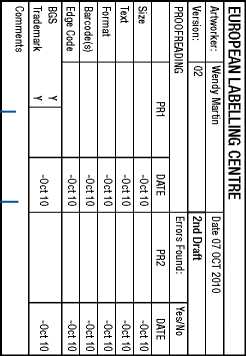
|
Barcodes, Symbols and Reimbursement Information |
Compliance with National Regulations |
Product Information proofread as per RA SOP CE-RAPV-009 |
|
Storage Conditions and Shelf-Life |
Consistency check with all figures cited in the product information |
Product name,strength,composition (API & excipients) |
RA Proofreading Checklist
|
Date |
Signature |
Name |
Country |
2nd DRAFT |
ARTWORK APPROVAL |
EUROPEAN LABELLING CENTRE | |
|
RA PROOFREAD +APPROVED | |||||||
|
MARKETING APPROVED |
DATE |
• a disorder in which the blood becomes too alkaline (metabolic alkalosis)
• a particular type of metabolic acidosis (lactic acidosis)
• severe liver disease (when the liver does not function properly and requires very intensive treatment)
• poor lactate metabolism (this occurs in severe liver disease, as lactate is removed by the liver)
• liver disease that causes fluid to build up within the abdomen (ascitic cirrhosis).
Your doctor will take special care when giving
you Compound Sodium Lactate Infusion
Please tell your doctor if you have or have had any
of the following medical conditions:
• if you're receiving ceftriaxone (an antibiotic). (See also “Taking other medicines”)
• heart failure
• respiratory failure (lung disease) (special monitoring may be required in the above conditions)
• poor kidney function
• higher levels of chloride in the blood than normal (hyperchloraemia)
• your blood is too acidic which is life-threatening (severe metabolic acidosis)
• high blood pressure (hypertension)
• build up of fluid under the skin, affecting all parts of the body (general oedema)
• build up of fluid under the skin, particularly around the ankles (peripheral oedema)
• build up of fluid in the lungs (pulmonary oedema)
• high blood pressure during pregnancy (pre-eclampsia)
• a disease that causes high levels of a hormone called aldosterone (aldosteronism)
• higher levels of sodium in the blood than normal (hypernatraemia) or any other condition associated with sodium retention (when
the body retains too much sodium), such as treatment with steroids (See also below, “Taking other medicines”)
• heart disease of any type
• any condition that means that you are more likely to have high blood levels of potassium (hyperkalaemia), such as:
- kidney failure
- adrenocortical insufficiency (this disease of the adrenal gland affects hormones that control the concentration of chemicals in the body)
- acute dehydration (a loss of water from the body, e.g. due to vomiting or diarrhoea)
- extensive tissue damage (as can occur in severe burns)
Close monitoring of your blood potassium levels is required.
• diseases associated with high levels of vitamin D (e.g. sarcoidosis, a disease affecting the skin and internal organs)
• kidney stones
• poor liver function
• diabetes
• you're taking cardiac glycosides (cardiotonics) used to treat heart failure, such as digitalis or digoxin (See also “Taking other medicines”).
When you are given this infusion, your doctor will take blood and urine samples to monitor:
• the amount of chemicals such as sodium and potassium in your blood (your plasma electrolytes)
• the acidity of your blood and urine (your acid-base balance).
Although Compound Sodium Lactate Infusion contains potassium, it does not contain enough to treat very low blood plasma levels of potassium (severe potassium deficiency).
Calcium chloride can be harmful if injected into the body tissues. Therefore, the Compound Sodium Lactate Infusion must not be given by injecting it into a muscle (intramuscular injection). Also, your doctor will make every effort to avoid the escape of the solution into the tissues surrounding the vein.
Compound Sodium Lactate Infusion must not be given through the same needle as a blood transfusion. This can damage the red blood cells or cause them to clump together.
TH-30-01-540

|
Barcodes, Symbols and Reimbursement Information |
Compliance with National Regulations |
Product Information proofread as per RA SOP CE-RAPV-009 |
|
Storage Conditions and Shelf-Life |
Consistency check with all figures cited in the product information |
Product name,strength,composition (API & excipients) |
RA Proofreading Checklist
|
Date |
Signature |
Name |
Country |
2nd DRAFT |
ARTWORK APPROVAL |
EUROPEAN LABELLING CENTRE | |
|
RA PROOFREAD +APPROVED | |||||||
|
MARKETING APPROVED |
DATE |
As Compound Sodium Lactate Infusion contains lactate (a substance found in the body), it can make your blood too alkaline (metabolic alkalosis). Compound Sodium Lactate Infusion should be given with special care to babies less than 6 months of age.
Your doctor will take into account if you are receiving parenteral nutrition (nutrition given by infusion into a vein).
If you are given Compound Sodium Lactate Infusion for a long time, you will be given an extra source of nutrients.
Taking other medicines
Please tell your doctor or pharmacist if you
are taking or have recently taken any other
medicines, including medicines obtained without a
prescription.
It is particularly important that you inform your doctor if you are taking:
• Ceftriaxone (an antibiotic), this should not be given through the same infusion line, unless thoroughly flushed
• cardiac glycosides (cardiotonics) such as digitalis or digoxin used to treat heart failure. The effects of these drugs can be increased by calcium. This can lead to life threatening changes to the heart rhythm
• corticosteroids (anti-inflammatory medicines)
• carbenoxolone (an anti-inflammatory medicine used to treat stomach ulcers).
These medicines can cause the body to accumulate sodium and water, leading to:
• tissue swelling due to fluid collection under the skin (oedema)
• high blood pressure (hypertension).
The following medicines can increase the concentration of potassium in the blood. This effect can be life-threatening. A rise in the blood potassium levels is more likely to occur if you have kidney disease.
• potassium-sparing diuretics (certain water tablets, e.g. amiloride, spironolactone, triamterene)
(Note that these medicines may be included in combination medicinal products)
• angiotensin converting enzyme (ACE) inhibitors (used to treat high blood pressure)
• angiotensin II receptor antagonists (used to treat high blood pressure)
• tacrolimus (used to prevent rejection of a transplant and to treat some skin diseases)
• cyclosporin (used to prevent rejection of a transplant).
Other medicines that can affect or be affected by Compound Sodium Lactate Infusion include:
• thiazide diuretics such as hydrochlorothiazide or chlortalidone
• vitamin D
• bisphosphonates (to treat bone diseases such as osteoporosis)
• fluoride (for the teeth and bones)
• fluoroquinolones (a type of antibiotic, including ciprofloxacin, norfloxacin, ofloxacin)
• tetracyclines (a type of antibiotic, including tetracycline)
• acidic medicines, including:
- salicylates used to treat inflammation (e.g. aspirin)
- barbiturates (sleeping tablets)
- lithium (used to treat psychiatric illness)
• alkaline (basic) medicines including:
- sympathomimetics (stimulant medicines such as ephedrine, and pseudoephedrine, used in cough and cold preparations)
- other stimulants (e.g. dexamphetamine, phenfluramine).
Using Compound Sodium Lactate Infusion with food and drink
You should ask your doctor about what you can eat or drink.
Pregnancy and breast-feeding
Ask your doctor or pharmacist for advice before
taking any medicine.
Tell your doctor if you are pregnant or breast-feeding.
Compound Sodium Lactate Infusion can be used safely during pregnancy or breast-feeding.
Calcium can reach your unborn baby through the placenta and, after birth, through the breast milk.
TH-30-01-540
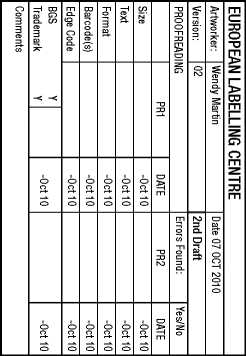
|
Barcodes, Symbols and Reimbursement Information |
Compliance with National Regulations |
Product Information proofread as per RA SOP CE-RAPV-009 |
|
Storage Conditions and Shelf-Life |
Consistency check with all figures cited in the product information |
Product name,strength,composition (API & excipients) |
RA Proofreading Checklist
|
Date |
Signature |
Name |
Country |
2nd DRAFT |
ARTWORK APPROVAL |
EUROPEAN LABELLING CENTRE | |
|
RA PROOFREAD +APPROVED | |||||||
|
MARKETING APPROVED |
DATE |
Your doctor will monitor the levels of chemicals in your blood and the amount of fluid in your body. However, if another medicine is to be added to your solution for infusion during pregnancy or breast-feeding you should:
• consult your doctor
• read the Patient Information Leaflet of the medicine that is to be added.
Driving and using machines
Ask your doctor or pharmacist for advice before
driving or using machines.
3. How you will be given Compound Sodium Lactate Infusion
You will be given Compound Sodium Lactate Infusion by a doctor or nurse. Your doctor will decide on how much you need and when it is to be given. This will depend on your age, weight, condition and the reason for treatment. The amount you are given may also be affected by other treatments you are receiving.
You should NOT be given Compound Sodium Lactate Infusion if there are particles in the solution or if the pack is damaged in any way. Compound Sodium Lactate Infusion will usually be given to you through a plastic tube attached to a needle in a vein. Usually a vein in your arm is used to give you the infusion. However, your doctor may use another method to give you the medicine.
Any unused solution should be thrown away. You should NOT be given an infusion of Compound Sodium Lactate Infusion from a bag that has been partly used.
If you receive more Compound Sodium Lactate Infusion than you should
If you are given too much Compound Sodium Lactate Infusion (over-infusion) or it is given too fast, this may lead to the following symptoms:
• water and/or sodium (salt) overload with build up of liquid in the tissues (oedema) causing swelling
- hyperkalemia (higher levels of potassium in the blood than normal) especially in patients with kidney failure, causing symptoms such as: pins and needles in the arms and legs (paresthesia)
- muscle weakness
- an inability to move (paralysis)
- an irregular heartbeat (cardiac arrhythmias)
- heart block (a very slow heartbeat)
- cardiac arrest (the heart stops beating; a life-threatening situation)
- confusion
• hypercalcemia (higher levels of calcium in the blood than normal) causing symptoms such as:
- a decreased appetite (anorexia)
- feeling sick (nausea)
- vomiting
- constipation
- abdominal pain
- mental disturbances such as irritability or depression
- drinking lots of water (polydipsia)
- producing more urine than normal (polyuria)
- kidney disease due to build up of calcium in the kidneys (nephrocalcinosis)
- kidney stones
- coma (unconsciousness)
- chalky taste
- redness (hot flushes)
- dilatation of the blood vessels in the skin (peripheral vasodilatation).
• Hypokalemia (lower levels of potassium in the blood than normal) and metabolic alkalosis (when the blood becomes too basic), especially in patients with kidney failure, causing symptoms such as:
- mood changes
- tiredness
- shortness of breath
- stiffness of the muscles
- twitching of the muscles
- contraction of muscles.
If you develop any of these symptoms you must inform your doctor immediately. Your infusion will be stopped and you will be given treatment depending on the symptoms.
If a medicine has been added to your Compound Sodium Lactate Infusion before over-infusion occurs, that medicine may also cause symptoms. You should read the Patient Information Leaflet of the added medicine for a list of possible symptoms.
TH-30-01-540
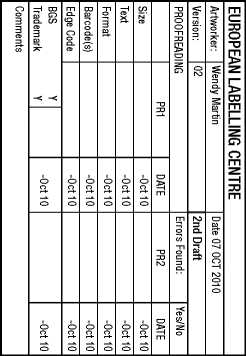
|
Barcodes, Symbols and Reimbursement Information |
Compliance with National Regulations |
Product Information proofread as per RA SOP CE-RAPV-009 |
|
Storage Conditions and Shelf-Life |
Consistency check with all figures cited in the product information |
Product name,strength,composition (API & excipients) |
RA Proofreading Checklist
|
Date |
Signature |
Name |
Country |
2nd DRAFT |
ARTWORK APPROVAL |
EUROPEAN LABELLING CENTRE | |
|
RA PROOFREAD +APPROVED | |||||||
|
MARKETING APPROVED |
DATE |
Stopping your Compound Sodium Lactate Infusion
Your doctor will decide when to stop giving you this infusion.
If you have any further questions on the use of this product, ask your doctor.
4. Possible Side Effects
Like all medicines, Compound Sodium Lactate Infusion can cause side effects, although not everybody gets them.
If you have any of the following symptoms you should tell your doctor or nurse immediately.
These may be signs of a very severe or even fatal hypersensitivity (allergic) reaction called anaphylactic shock:
• hives (urticaria) which may be localised to a part of the body or widespread
• skin rash
• redness of the skin (erythema)
• itching (pruritus)
• skin swelling (angioedema)
• coughing
• narrowing of the airways causing difficulty breathing (bronchospasm)
• a fast heartbeat (tachycardia)
• a slow heartbeat (bradycardia)
• decreased blood pressure
• chest discomfort or pain
• anxiety
• tightness of the chest (making it difficult to breathe)
• shortness of breath (dyspnea)
• flushing
• throat irritation
• pins and needles (paresthesias)
• reduced sense in the mouth (hypoesthesia oral)
• altered taste (dysgeusia)
• fever (pyrexia)
• nausea
• headache
• changes in the concentrations of the chemicals in the blood (hyperkalemia)
• reactions due to the administration technique:
- local pain or reaction (redness or swelling at the site of infusion)
- irritation and inflammation of the vein into which the solution is infused (phlebitis).
This can cause redness, pain or burning and swelling along the path of the vein into which the solution is infused.
- rash or itching (pruritus) of the infusion site Other side effects noted with similar products (same active ingredients) include:
These may be signs of a very severe or even fatal hypersensitivity (allergic) reaction called anaphylactic shock:
• a blocked nose (nasal congestion)
• a slow heartbeat (bradycardia)
• sneezing
• swelling in the throat making it difficult to breathe (laryngeal oedema also called Quincke's oedema)
• skin swelling (angioedema)
• electrolyte disturbances
• hypervolemia
• panic attack.
Other reactions due to the administration technique:
• infection at the site of infusion
• escape of the infusion solution into the tissues around the vein (extravasation). This can damage the tissues and cause scarring
• numbness at the site of infusion.
If a medicine has been added to the solution for infusion, the added medicine may also cause side effects. These side effects will depend on the medicine that has been added. You should read the Patient Information Leaflet of the added medicine for a list of possible symptoms.
Please tell your doctor or nurse if you notice any listed or unlisted side effects. If any side effects occur, the infusion must be stopped.
TH-30-01-540
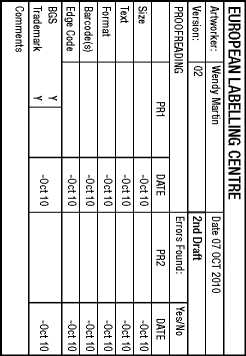
|
Barcodes, Symbols and Reimbursement Information |
Compliance with National Regulations |
Product Information proofread as per RA SOP CE-RAPV-009 |
|
Storage Conditions and Shelf-Life |
Consistency check with all figures cited in the product information |
Product name,strength,composition (API & excipients) |
RA Proofreading Checklist
|
Date |
Signature |
Name |
Country |
2nd DRAFT |
ARTWORK APPROVAL |
EUROPEAN LABELLING CENTRE | |
|
RA PROOFREAD +APPROVED | |||||||
|
MARKETING APPROVED |
DATE |
5. How Compound Sodium Lactate Infusion is stored
Keep out of the reach and sight of children. VIAFLEX containers should be stored within their overpouch at a temperature not above 25°C. Compound Sodium Lactate Infusion should NOT be given to you after the expiry date shown on the bag. The expiry date refers to the last day of that month.
You should not be given Compound Sodium Lactate Infusion, if there are particles in the solution or if the unit is damaged in any way.
6. Further Information
This leaflet does not contain all the information about this medicine. If you have any questions or are not sure about anything, ask your healthcare professional.
What Compound Sodium Lactate Infusion contains
The active substances are:
• sodium chloride (6.0 g per litre)
• potassium chloride (400 mg per litre)
• calcium chloride dihydrate 270 mg per litre
• sodium lactate 3.22 g per litre.
The other ingredients are:
• sodium hydroxide (for pH adjustment)
• lactic acid (for pH adjustment)
• water for injections.
What Compound Sodium Lactate Infusion looks like and contents of the pack Compound Sodium Lactate Infusion is a clear solution, free from visible particles. It is supplied in a plastic (VIAFLEX) infusion bag made from PVC. The bag contains either 500 ml or 1000 ml and is sealed in a protective plastic overpouch.
Not all pack sizes may be marketed.
Marketing Authorisation Holder and Manufacturers
Marketing Authorisation Holder:
Baxter Healthcare Ltd.
Caxton Way Thetford Norfolk IP24 3SE United Kingdom
Send all enquiries to this address.
Compound Sodium Lactate Infusion can be made at any of these addresses:
Baxter Healthcare Ltd.
Caxton Way
Thetford
Norfolk
IP24 3SE
United Kingdom
Baxter Healthcare S.A.
Moneen Road Castlebar County Mayo Ireland
This leaflet was last approved in (MM/YYY).
For information about Compound Sodium Lactate Infusion or to request this leaflet in formats such as audio or large print please contact the Marketing Authorisation Holder: Tel: 01635 206345.
Baxter and Viaflex are trademarks of Baxter International Inc.
TH-30-01-540
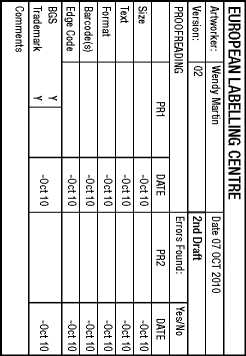
3 5> S’ IS J
g |
RA Proofreading Checklist
S’ 3 a


|
Date |
Signature |
Name |
Country |
2nd DRAFT |
ARTWORK APPROVAL |
EUROPEAN LABELLING CENTRE | |
|
RA PROOFREAD +APPROVED | |||||||
|
MARKETING APPROVED |
DATE |

Compound Sodium Lactate Intravenous Infusion BP
Baxter
The following information is intended for medical or healthcare professionals only:
Handling and Preparation
The solution for infusion should be visually inspected prior to use.
Use only if the solution is clear, without visible particles and if the container is undamaged. Administer immediately following the insertion of infusion set.
Do not remove unit from overwrap until ready for use. The inner bag maintains the sterility of the product. Do not use plastic containers in series connections. Such use could result in air embolism due to residual air being drawn from the primary container before the administration of the fluid from the secondary container is completed.
The solution should be administered with sterile equipment using an aseptic technique. The equipment should be primed with the solution in order to prevent air entering the system.
Additives may be introduced before infusion or during infusion through the re-sealable medication port. When additive is used, verify isotonicity prior to parenteral administration. Thorough and careful aseptic mixing of any additive is mandatory. Solutions containing additives should be used immediately and not stored.
Discard after single use.
Discard any unused portion.
Do not reconnect partially used bags.
Preparation for Administration The VIAFLEX container has an outlet port designed for an administration set with a short single connector. If an administration set with a combined air inlet/fluid path connector has to be used, ensure the air inlet tube is always clamped off.
1. Opening
a. Remove the protective overpouch by tearing down from notch and remove container.
b. Carefully straighten hanger and ports, if necessary.
c. Squeeze container and inspect for minute leaks and examine solution for visible particles or cloudiness by viewing along seam.
d. Discard unit if leaks, particles or cloudiness are evident.
2. Preparation for administration
Use sterile material for preparation and administration.
a. Suspend container from base eyelet support.
b. Use an aseptic technique to prepare the administration set.
c. Remove blue protector from outlet port and insert set connector well into port.
d. Prime set and regulate administration as required.
e. If administration set becomes blocked do not pump contents back into container but replace equipment.
f. Discard any unused portion and equipment after use. Do not store or reconnect partly used containers.
3. Techniques for injection of additive medications
The VIAFLEX container has a second port with a self-sealing rubber medication port designed for the addition of medication using a syringe. This is the only port for adding medication.
Warning: Additives may be incompatible.
Check additive compatibility with both the solution and container prior to use. When additive is used, verify isotonicity prior to parenteral administration. Thorough and careful aseptic mixing of any additive is mandatory. Solutions containing additives should be used immediately and not stored. (see Paragraph 5 “Incompatibilities of additive medications” below).
To add medication before administration
a. Swab the medication port with the appropriate anti-bacterial fluid in line with current recommended practice and procedure.
b. Using a syringe with a 20 - 22 gauge needle, puncture re-sealable medication port and inject. Do not leave the syringe and needle in the port once the medication has been injected.
c. Shake and squeeze the VIAFLEX container so that the solution and medication are thoroughly mixed. For high density medications such
as potassium chloride, squeeze both ports while upright and invert the container several times while shaking and squeezing to ensure thorough mixing.
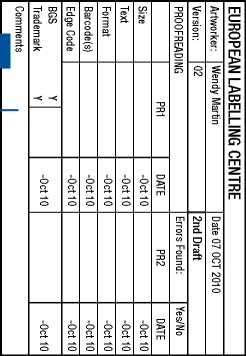
|
Barcodes, Symbols and Reimbursement Information |
Compliance with National Regulations |
Product Information proofread as per RA SOP CE-RAPV-009 |
|
Storage Conditions and Shelf-Life |
Consistency check with all figures cited in the product information |
Product name,strength,composition (API & excipients) |
RA Proofreading Checklist
TH-30-01-540
|
Date |
Signature |
Name |
Country |
2nd DRAFT |
ARTWORK APPROVAL |
EUROPEAN LABELLING CENTRE | |
|
RA PROOFREAD +APPROVED | |||||||
|
MARKETING APPROVED |
DATE |
To add medication during administration
a. Close clamp on the set.
b. Disinfect medication port.
c. Using a syringe with a 20 - 22 gauge needle, puncture re-sealable medication port and inject.
d. Remove container from IV pole and/or turn to an upright position.
e. Evacuate both ports by tapping gently while the container is in an upright position.
f. Mix solution and medication thoroughly.
g. Return container to in use position, re-open the clamp and continue administration.
Cautions
a. Do not vent.
b. Do not administer unless the solution is clear and container undamaged.
c. Do not use in series connections as this could result in air embolism due to residual air being drawn from the primary container before administration of fluid from the secondary container is completed.
d. Discontinue infusion if adverse reaction occurs.
e. Rapid infusion may be harmful.
f. It is recommended that the intravenous administration set be replaced at least once every 24 hours. Details of the use of the set can be recorded - record labels are available from Baxter Healthcare Ltd.
4. In-use shelf-life: Additives
The chemical and physical stability of any additive at the pH of Compound Sodium Lactate Solution in the VIAFLEX container should be established prior to use. From a microbiological point of view, the diluted product must be used immediately unless dilution has taken place in controlled and validated aseptic conditions. If not used immediately, in-use storage times and conditions are the responsibility of the user.
5. Incompatibilities of additive medications Ceftriaxone must not be mixed with calcium-containing solutions including Ringer Lactate solution.
As with all parenteral solutions additives may be incompatible. Compatibility of the additives with the Compound Sodium Lactate solution must be assessed before addition. After addition of the additive, incompatibility may become visible by a possible colour change and/or the appearance of precipitates, insoluble complexes or crystals.
The Instructions for Use of the medication to be added and other relevant literature must be consulted.
Before adding a drug, verify it is soluble and stable in water at the pH of Compound Sodium Lactate Solution (pH 5.0 to 7.0).
When making additions to Compound Sodium Lactate solution, aseptic technique must be used. Mix the solution thoroughly when additives have been introduced. Do not store solutions containing additives. As a guidance the following medications are incompatible with the Compound Sodium Lactate Solution (non-exhaustive listing):
• Medications incompatible with Compound Sodium Lactate Solution
- Aminocaproic acid
- Amphotericin B
- Metaraminol tartrate
- Cefamandole
- Ceftriaxone
- Cortisone acetate
- Diethylstilbestrol
- Etamivan
- Ethyl alcohol
- Phosphate and carbonate solutions
- Oxytetracycline
- Thiopental sodium
- Versenate disodium
• Medications with partial incompatibility with Compound Sodium Lactate Solution:
- Tetracycline stable for 12 hours
- Ampicillin sodium
concentration of 2% - 3% stable for 4 hours concentration >3% must be given within 1 hour
- Minocycline stable for 12 hours
- Doxycycline stable for 6 hours
Those additives known to be incompatible should not be used.
Baxter and Viaflex are trademarks of Baxter International Inc.
TH-30-01-540
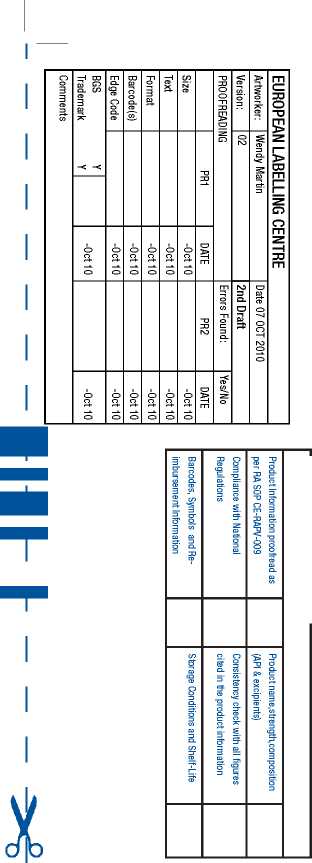
RA Proofreading Checklist
|
Date |
Signature |
Name |
Country |
2nd DRAFT |
ARTWORK APPROVAL |
EUROPEAN LABELLING CENTRE | |
|
RA PROOFREAD +APPROVED | |||||||
|
MARKETING APPROVED |
DATE |
8